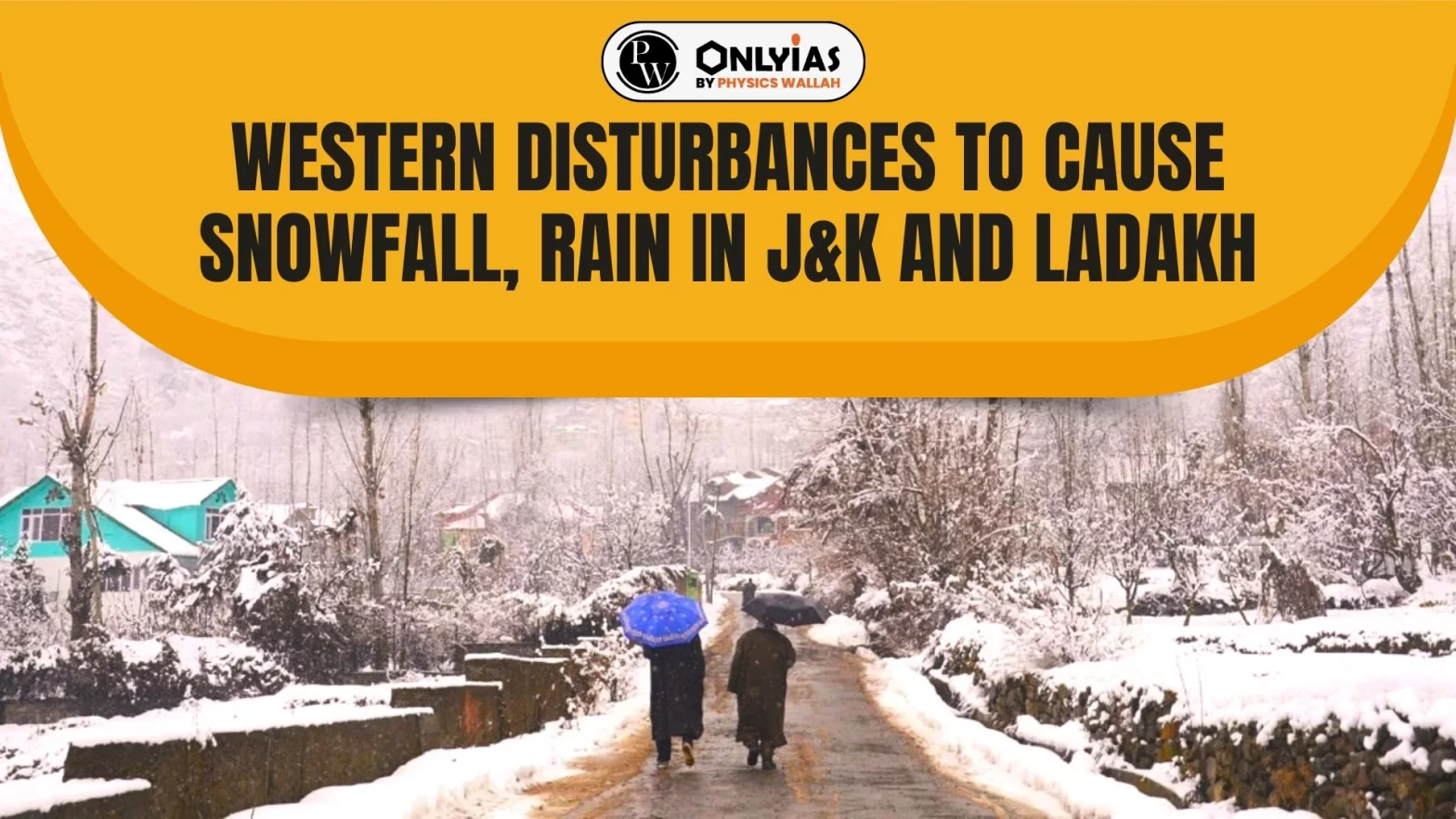Context:
This editorial is based on the news “Why Kashmir and Ladakh are without snow this winter, its implications” which was published in Indian Express. This article highlights the issues which are rising due to bereft of snow this season in Jammu and Kashmir and Ladakh with possible reasons for the existence of the concerned situation.
Snowfall Scarcity: IMD Highlights Unusual Rainfall Patterns in Jammu and Kashmir, Ladakh
- Dry winter in Jammu and Kashmir and Ladakh: Winter precipitation is here mainly in the form of snowfall. The region gets its first snowfall in the first half of December, and then through most of January.
- India Meteorological Department (IMD) Data: Jammu and Kashmir saw 80% rainfall deficit in December, and 100% deficit in January so far, while Ladakh has had no precipitation at all in December or January.
Decline in Western Disturbance Events: A Probable Reason of Decline in Snowfall in Jammu and Kashmir, Ladakh
The overall decreasing trend of snowfall has been attributed to:
- Decline in Western Disturbance Events: The mean frequency of strong and extreme Western Disturbances, that results in rainfall or snowfall, had declined as much as 43% in recent years.
- Gradual Rise in Temperatures: The rate of increase of temperature is seen to be higher and contributing to the decline in snowfall.
- The prevailing El Niño event in the eastern Pacific Ocean: For the past few months, El Niño has persisted and will continue to do so in the coming months. This has affected the global atmospheric circulation, and might be contributing to the deficit precipitation.
About Western Disturbances
- Rain-bearing Winds: These are large eastward-moving rain-bearing wind systems that originate beyond Afghanistan and Iran, picking up moisture from as far as the Mediterranean Sea and even the Atlantic Ocean.
- Significance: Winter precipitation in the Himalayan region is caused mainly by Western Disturbances.
- Western Disturbances are the primary source of rainfall over north and northwest India during the post-monsoon and winter months.
- These are the 3rd major contributors to India’s annual rainfall. During winters, about 4 to 6 western disturbance events happen every month on an average.
About El Niño
- It is a climate pattern that describes the unusual warming of surface waters in the eastern tropical Pacific Ocean.
Repercussions of Less Snowfall in the Region:
- Long-term Implications: The generation of less hydroelectricity, high rate of glacier melting, and an adverse impact on the drinking water supply, since scanty snowfall means very little recharge of groundwater.
- Short-term Implications: An increase in forest fires, agricultural drought, and a drop in crop production. It can lead to an early spring, which means early flowering, which can cause a reduction in yield.
- Impact on Winter Tourism Attractions: As per officials, the decline in such tourists would be at least 60%.
Continue To Read: Dry Spell In Kashmir Winter
Conclusion
The winter snow is a source of steady moisture to the soil that is vital for winter crops, particularly horticulture. Yields of apples or saffron, important ingredients of the local economy, are badly affected in the absence of snowfall. It will impact the local climate and availability of waters in streams and rivers too.
![]() 16 Jan 2024
16 Jan 2024

